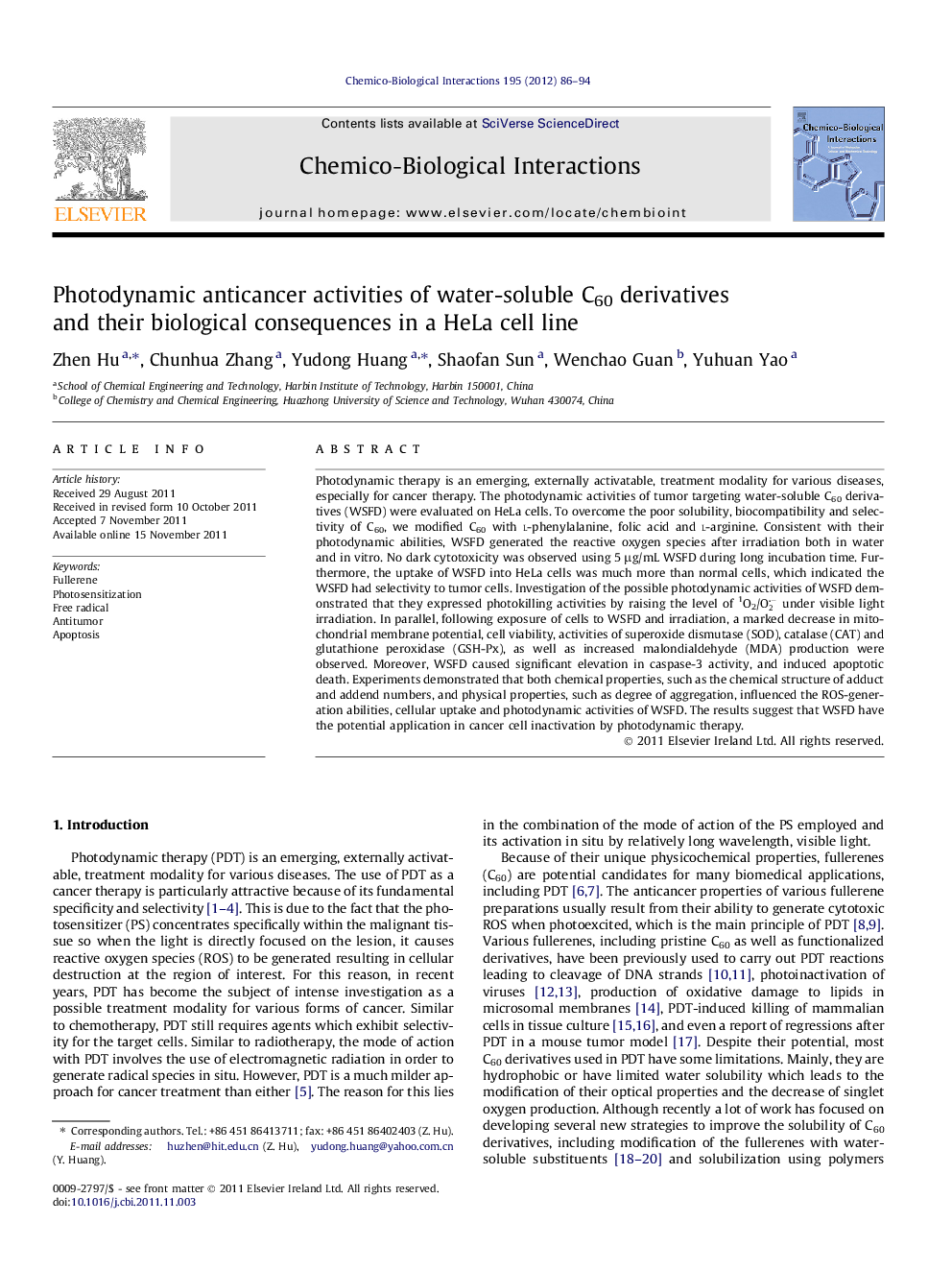| Article ID | Journal | Published Year | Pages | File Type |
|---|---|---|---|---|
| 5848440 | Chemico-Biological Interactions | 2012 | 9 Pages |
Photodynamic therapy is an emerging, externally activatable, treatment modality for various diseases, especially for cancer therapy. The photodynamic activities of tumor targeting water-soluble C60 derivatives (WSFD) were evaluated on HeLa cells. To overcome the poor solubility, biocompatibility and selectivity of C60, we modified C60 with l-phenylalanine, folic acid and l-arginine. Consistent with their photodynamic abilities, WSFD generated the reactive oxygen species after irradiation both in water and in vitro. No dark cytotoxicity was observed using 5 μg/mL WSFD during long incubation time. Furthermore, the uptake of WSFD into HeLa cells was much more than normal cells, which indicated the WSFD had selectivity to tumor cells. Investigation of the possible photodynamic activities of WSFD demonstrated that they expressed photokilling activities by raising the level of 1O2/O2- under visible light irradiation. In parallel, following exposure of cells to WSFD and irradiation, a marked decrease in mitochondrial membrane potential, cell viability, activities of superoxide dismutase (SOD), catalase (CAT) and glutathione peroxidase (GSH-Px), as well as increased malondialdehyde (MDA) production were observed. Moreover, WSFD caused significant elevation in caspase-3 activity, and induced apoptotic death. Experiments demonstrated that both chemical properties, such as the chemical structure of adduct and addend numbers, and physical properties, such as degree of aggregation, influenced the ROS-generation abilities, cellular uptake and photodynamic activities of WSFD. The results suggest that WSFD have the potential application in cancer cell inactivation by photodynamic therapy.
⺠Several tumor targeted C60 derivatives are designed and synthesized. ⺠The tumor targeted WSFD has excellent visible ligfht driven photodynamic activities. ⺠The tumor targeting functional groups increase the uptake of WSFD in HeLa cells.
